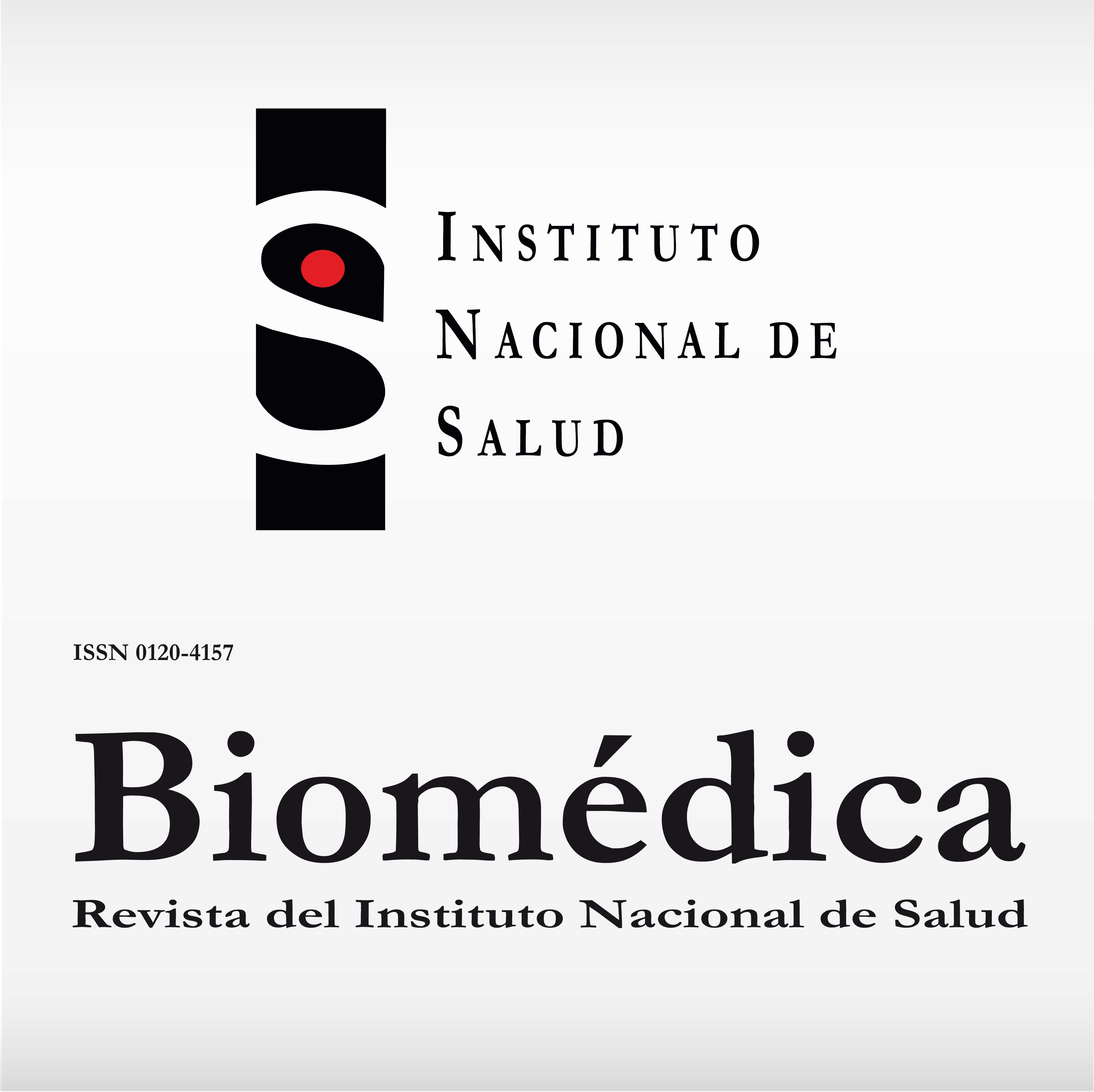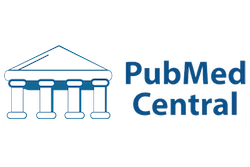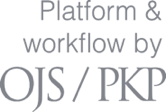Characteristics of Clostridium difficile infection in a high complexity hospital and report of the circulation of the NAP1/027 hypervirulent strain in Colombia
Abstract
Introduction: Clostridium difficile is the main pathogen related to healthcare-associated diarrhea and it is the cause of 20 to 30% of diarrhea cases caused by antibiotics. In Colombia and Latin America, the knowledge about the epidemiological behavior of this infection is limited.
Objective: To describe the characteristics of a series of patients with C. difficile infection.
Materials and methods: We performed a descriptive case series study of patients with C. difficile infection hospitalized in the Fundación Clínica Shaio from January, 2012, to November, 2015.
Results: We analyzed 36 patients. The average age was 65 years. The risk factors associated with the infection were: previous use of antibiotics (94.4%), prior hospitalization in the last three months (66.7%) and use of proton pump inhibitors (50%). The most common comorbidities were chronic kidney disease (41.7%) and diabetes mellitus (30.6%). The most frequent symptoms were more than three loose stools per day (97.1%) and abdominal pain (42.9%). According to the severity of the disease, 44.4% of cases were classified as mild to moderate, 38.9% as severe, and 11.1% as complicated or severe. The detection of the toxin by PCR (GeneXpert) was the most common diagnostic procedure (63.8%). Global mortality during hospitalization was 8%. We identified four strains with serotype NAP1/027 and nine samples positive for binary toxin.
Conclusion: Clostridium difficile infection should be suspected in patients with diarrhea and traditional risk factors associated with this disease. We report the circulation of the hypervirulent strain serotype NAP1/027 in Colombia, which should be countered with epidemiological surveillance and a prompt diagnosis.
Downloads
References
Elixhauser A, Jhung M. Clostridium difficile-associated disease in U.S. hospitals, 1993-2005. Statistical Brief #50. Rockville: Agency for Health Care Policy and Research; 2008.
Reveles KR, Lee GC, Boyd NK, Frei CR. The rise in Clostridium difficile infection incidence among hospitalized adults in the United States: 2001-2010. Am J Infect Control. 2014;42:1028-32. https:/doi.org/10.1016/j.ajic.2014.06.011
Zimlichman E, Henderson D, Tamir O, Franz C, Song P, Yamin CK, et al. Healthcare-associated infections: A meta-analysis of costs and financial impact on the US healthcare system. JAMA Intern Med. 2013;173:2039-46. https:/doi.org/10.1001/jamainternmed.2013.9763
Leffler DA, Lamont JT. Clostridium difficile infection. N Engl J Med. 2015;372:1539-48. https:/doi.org/10.1056/NEJMc1506004
McDonald LC, Killgore GE, Thompson A, Owens RC Jr, Kazakova SV, Sambol SP, et al. An epidemic, toxin gene-variant strain of Clostridium difficile. N Engl J Med. 2005;353:2433-41. https:/doi.org/10.1056/NEJMoa051590
Rodríguez-Pardo D, Mirelis B, Navarro F. Infecciones producidas por Clostridium difficile. Enferm Infecc Microbiol Clin. 2013;31:254-63. https:/doi.org/10.1016/j.eimc.2012. 12.010
Hurley BW, Nguyen CC. The spectrum of pseudomem-branous enterocolitis and antibiotic-associated diarrhea. Arch Intern Med. 2002;162:2177-84. https:/doi.org/10.1001/archinte.162.19.2177
Pothoulakis C. Effects of Clostridium difficile toxins on epithelial cell barrier. Ann N Y Acad Sci. 2000;915:347-56. https:/doi.org/10.1111/j.1749-6632.2000.tb05263.x
Hopkins MJ, Macfarlane GT. Changes in predominant bacterial populations in human faeces with age and with Clostridium difficile infection. J Med Microbiol. 2002;51:448-54. https:/doi.org/10.1099/0022-1317-51-5-448
Blanco A, Ruiz O, Otero W, Gómez M. Infección por Clostridium difficile en ancianos. Rev Col Gastroenterol. 2013;28:53-63.
Otero W, González A, Gómez M. Prevalencia de diferen-tes tipos de colitis en personas adultas mayores. Rev Col Gastroenterol. 2009;24:272-8.
Becerra MG, Ospina S, Atehortúa SL, Berbesi DY. Factores de riesgo para la infección por Clostridium difficile. Infectio. 2011;15:220-6. https:/doi.org/10.1016/S0123-9392 (11)70735-4
Cohen SH, Gerding DN, Johnson S, Kelly CP, Loo VG, McDonald LC, et al. Clinical practice guidelines for Clostridium difficile infection in adults: 2010 update by the Society for Healthcare Epidemiology of America (SHEA) and the Infectious Diseases Society of America (IDSA). Infect Control Hosp Epidemiol. 2010;31:431-55. https:/doi.org/10.1086/651706
Zumbado-Salas R, Gamboa-Coronado MM, Rodríguez-Cavallini E, Chaves-Olarte E. Clostridium difficile in adult patients with nosocomial diarrhea in a Costa Rican hospital. Am J Trop Med Hyg. 2008;79:164-5.
Legaria MC, Lumelsky G, Rosetti S. Clostridium difficile-associated diarrhea from a general hospital in Argentina. Anaerob. 2003;9:113-6. https:/doi.org/10.1016/S1075-9964 (03)00088-X
Balassiano IT, Dos Santos-Filho J, de Oliveira MP, Ramos MC, Japiassu AM, Dos Reis AM, et al. An outbreak case of Clostridium difficile-associated diarrhea among elderly inpatients of an intensive care unit of a tertiary hospital in Rio de Janeiro, Brazil. Diagn Microbiol Infect Dis. 2010;68:449-55. https:/doi.org/10.1016/j.diagmicrobio.2010.07.017
Álvarez M, González R, Briceño I, Cofre C, Labarca J, Vial P, et al. Diagnosis of Clostridium difficile diarrhea: In search of a more efficient clinical focus. Rev Med Chil. 2001;129:620-5.
Quesada-Gómez C, Rodríguez C, Gamboa-Coronado M del M, Rodríguez-Cavallini E, Du T, Mulvey MR, et al. Emergence of Clostridium difficile NAP1 in Latin America. J Clin Microbiol. 2010;48:669-70. https:/doi.org/10.1128/JCM.02196-09
Khanna S, Gupta A, Baddour LM, Pardi DS. Epidemiology, outcomes, and predictors of mortality in hospitalized adults with Clostridium difficile infection. Intern Emerg Med. 2016;11:657-65. https:/doi.org/10.1007/s11739-015-1366-6
Shin JH, High KP, Warren CA. Older is not wiser, immuno-logically speaking: Effect of aging on host response to Clostridium difficile infections. J Gerontol A Biol Sci Med Sci. 2016;71:916-22. https:/doi.org/10.1093/gerona/glv229
Dial S, Alrasadi K, Manoukian C, Huang A, Menzies D. Risk of Clostridium difficile diarrhea among hospital inpatients prescribed proton pump inhibitors: Cohort and case-control studies. CMAJ. 2004;171:33-8. https:/doi.org/10.1503/cmaj.1040876
Thongprayoon C, Cheungpasitporn W, Phatharacharukul P, Edmonds PJ, Kaewpoowat Q, Mahaparn P, et al. Chronic kidney disease and end-stage renal disease are risk factors for poor outcomes of Clostridium difficile infection: A systematic review and meta-analysis. Int J Clin Pract. 2015;69:998-1006. https:/doi.org/10.1111/ijcp.12672
Anand A, Glatt AE. Clostridium difficile infection associated with antineoplastic chemotherapy: A review. Clin Infect Dis. 1993;17:109-13.
Fernández-Canigia L, Nazar J, Arce M, Dadamio J, Smayevsky J, Bianchini H. Clostridium difficile diarrhea: Frequency of detection in a medical center in Buenos Aires, Argentina. Rev Argent Microbiol. 2001;33:101-7.
Muto CA, Pokrywka M, Shutt K, Mendelsohn AB, Nouri K, Posey K, et al. A large outbreak of Clostridium difficile–associated disease with an unexpected proportion of deaths and colectomies at a teaching hospital following increased fluoroquinolone use. Infect Control Hosp Epidemiol. 2005; 26:273-80.
Camacho-Ortiz A, Galindo-Fraga A, Rancel-Cordero A, Macías AE, Lamothe-Molina P, Ponce de León-Garduño A, et al. Factors associated with Clostridium difficile disease in a tertiary-care medical institution in Mexico: A case-control study. Rev Invest Clin. 2009;61:371-7.
Balassiano IT, Yates A, Domingues CP, Ferreira EO. Clostridium difficile: A problem of concern in developed countries and still a mystery in Latin America. J Med Microbiol. 2012;61:169-79. https:/doi.org/10.1099/jmm.0.037077-0.
Delmée M. Laboratory diagnosis of Clostridium difficile disease. Clin Microbiol Infect. 2001;7:411-6. https:/doi.org/10.1046/j.1198-743x.2001.00294.x
Crobach MJT, Dekkers OM, Wilcox MH, Kuijper EJ. European Society of Clinical Microbiology and Infectious Diseases (ESCMID): Data review and recommendations for diagnosing Clostridium difficile-infection (CDI). Clin Microbiol Infect. 2009;15:1053-66. https:/doi.org/10.1111/j.1469-0691. 2009.03098.x
Deshpande A, Pasupuleti V, Rolston DDK, Jain A, Deshpande N, Pant C, et al. Diagnostic accuracy of real-time polymerase chain reaction in detection of Clostridium difficile in the stool samples of patients with suspected Clostridium difficile infection. Clin Infect Dis. 2011;53:e81-90. https:/doi.org/10.1093/cid/cir505
O’Horo JC, Jones A, Sternke M, Harper C, Safdar N. Molecular techniques for diagnosis of Clostridium difficile infection. Mayo Clin Proc. 2012;87:643-51. https:/doi.org/10. 1016/j.mayocp.2012.02.024
Planche T, Aghaizu A, Holliman R, Riley P, Poloniecki J, Breathnach A, et al. Diagnosis of Clostridium difficile infection by toxin detection kits. Lancet Infect Dis. 2008;8: 777-84. https:/doi.org/10.1016/S1473-3099(08)70233-0
Bagdasarian N, Rao K, Malani PN. Diagnosis and treatment of Clostridium difficile in adults: A systematic review. JAMA. 2015;313:398-408. https:/doi.org/10.1001/jama.2014.17103
Some similar items:
- José Millán Oñate-Gutiérrez, Janier Segura, Adriana Correa, Erika Cantor, María Virginia Villegas, Clostridium difficile infection: Description of NAP1/027 and non NAP1/027 strains in a high complexity center in Cali, Colombia, 2012-2015 , Biomedica: Vol. 39 No. Sp. 1 (2019): Suplemento 1, Microbiología médica, mayo
- Elvia Michelli, Adriana Millán, Hectorina Rodulfo, Mirian Michelli, Jesús Luiggi, Numirin Carreño, Marcos de Donato, Identification of enteropathogenic Escherichia coli in children with acute diarrheic syndrome from Sucre State, Venezuela , Biomedica: Vol. 36 (2016): Suplemento 1, Microbiología médica
- María Fernanda Gutiérrez, Sandra Moreno, Mónica Viviana Alvarado, Andrea Bermúdez, DNA sequence analysis indicates human origin of rotavirus and hepatitis A virus strains from western Colombia , Biomedica: Vol. 29 No. 2 (2009)
- Mercedes Salcedo-Cifuentes, Jesús Cabrera, Yesid Cuesta-Astroz, Edwin Carrascal, Yoshito Eizuru, Martha C. Domínguez, Adalberto Sánchez, Felipe García-Vallejo, Clonal expansion and genomic characterization of the human T-cell lymphotropic virus type I during the integration process in adult T-cell leukemia/lymphoma , Biomedica: Vol. 29 No. 2 (2009)
- Martine Bonnaure-Mallet, Paula Juliana Pérez-Chaparro, Patrice Gracieux, Vincent Meuric, Zohreh Tamanai-Shacoori, Jaime Eduardo Castellanos, Distribution of Porphyromonas gingivalis fimA genotypes in isolates from subgingival plaque and blood sample during bacteremia , Biomedica: Vol. 29 No. 2 (2009)
- Diego Fernando Zea, Martín Prager, Roger Adrian Figueroa, María Consuelo Miranda, Mucosal complication of cutaneous leishmaniasis , Biomedica: Vol. 29 No. 1 (2009)
- Juan Gabriel Bueno-Sánchez, Jairo René Martínez-Morales, Elena E. Stashenko, Wellman Ribón, Anti-tubercular activity of eleven aromatic and medicinal plants occurring in Colombia , Biomedica: Vol. 29 No. 1 (2009)
- Ana Margarita Montalvo, Lianet Monzote, Jorge Fraga, Ivón Montano, Carlos Muskus, Marcel Marín, Simonne De Donck, Iván Darío Vélez, Jean Claude Dujardin, PCR-RFLP and RAPD for typing neotropical Leishmania , Biomedica: Vol. 28 No. 4 (2008)
- Juan David Medina Hernández, Laura Alejandra Osorio Delgado, Daniel Zabala Gonzalez, Ricardo Wagner de Almeida Vitor, Jorge Enrique Gómez, Julio César Carranza , Gustavo Adolfo Vallejo, Molecular detection of Toxoplasma gondii in meat for human consumption in Ibague, Colombia , Biomedica: Vol. 42 No. 1 (2022)
- Marcel Marín, Yudy Alexandra Aguilar, José Robinson Ramírez, Omar Triana, Carlos Enrique Muskus, Molecular and immunological analyses suggest the absence of hydrophilic surface proteins in Leishmania (Viannia) panamensis , Biomedica: Vol. 28 No. 3 (2008)

| Article metrics | |
|---|---|
| Abstract views | |
| Galley vies | |
| PDF Views | |
| HTML views | |
| Other views | |

























